The compact SUV segment is a fiercely competitive arena, with manufacturers constantly raising the bar for performance, comfort, and technology. Today, we pit the Audi Q3 against the Mazda CX-5, two models known for their distinctive features and engineering excellence. In this comparison, we'll delve into the technical specifications and innovations that each vehicle brings to the table.
Audi Q3 vs Mazda CX-5 – Differences & prices compared
Design and Dimensions
Both the Audi Q3 and the Mazda CX-5 boast sleek designs and spacious interiors, but they cater to slightly different aesthetics. The Q3, measuring 4484 mm in length, 1849 mm in width, and 1585 mm in height, exudes a modern, sporty vibe. On the other hand, the CX-5 is larger in length at 4575 mm and stands taller at 1680 mm, giving it a more commanding presence on the road.
Engine and Performance
The Audi Q3 offers a selection of petrol and diesel engines with power outputs ranging from 150 hp to a robust 245 hp. This engine lineup comes with efficient fuel consumption rates, with the most economical variant achieving only 5.5 L/100km. The Q3's acceleration from 0 to 100 km/h can be as swift as 5.8 seconds, making it a dynamic choice for those seeking performance.
Meanwhile, the Mazda CX-5 features petrol and diesel engines as well, delivering power output between 150 hp and 194 hp. The CX-5 is not far behind in fuel efficiency, registering a minimum consumption of 5.6 L/100km. However, it lags slightly in acceleration, with the best performing variant reaching 100 km/h in 9.2 seconds.
Transmission and Handling
The Q3 offers both manual and automatic transmissions, including a sophisticated dual-clutch system. This results in smooth gear transitions and an engaging driving experience. The Q3 is available in both front-wheel drive and all-wheel drive configurations, enhancing its versatility on various terrains.
The CX-5 also comes with manual and automatic transmission options. However, its focus on driver engagement shines through its well-tuned chassis and steering feel, which are especially appealing to enthusiasts. Like the Q3, the CX-5 offers all-wheel drive, making it a capable performer in challenging conditions.
Interior Comfort and Technology
Stepping inside the Audi Q3, you'll be met with a luxurious cabin adorned with high-quality materials and state-of-the-art technology. With a trunk capacity of 530 liters, it comfortably accommodates luggage and groceries alike. Additional features like a customizable digital cockpit and advanced infotainment systems reflect Audi's commitment to innovation.
The Mazda CX-5 does not fall short either, with a well-designed interior and a user-friendly infotainment system. Its trunk capacity is also impressive at 522 liters. The SUV's minimalist design philosophy ensures a comfortable ride, complemented by ergonomic seating and high-quality materials used throughout the cabin.
Safety and Assistance Features
Both models come equipped with an array of safety features. The Q3's advanced driver assistance systems, including adaptive cruise control and lane-keeping assist, provide an added layer of security for passengers. Furthermore, the Q3 excels in crash test ratings, further solidifying its reputation as a safe choice.
The CX-5 features Mazda's i-Activsense technologies, which include smart brake support and blind-spot monitoring. These systems help to enhance the driver’s awareness and the vehicle's overall safety. Both SUVs have performed admirably in safety tests, with the CX-5 also boasting commendable ratings.
Conclusion
Choosing between the Audi Q3 and the Mazda CX-5 ultimately comes down to personal preferences and priorities. If you desire a sportier performance with luxury touches, the Q3 is a compelling finalist. However, if you value practicality and engaging driving experiences, the CX-5 stands out as a remarkable contender. Both vehicles represent excellence in the compact SUV segment, catering to a range of needs and desires amongst drivers.
Here’s where it gets real: The technical differences in detail
Costs and Efficiency:
Looking at overall running costs, both models reveal some interesting differences in everyday economy.
Mazda CX-5 has a distinct advantage in terms of price – it starts at 30000 £, while the Audi Q3 costs 38200 £. That’s a price difference of around 8228 £.
Fuel consumption also shows a difference: Audi Q3 manages with 1.70 L and is therefore clearly more efficient than the Mazda CX-5 with 7 L. The difference is about 5.30 L per 100 km.
Engine and Performance:
Power, torque and acceleration are the classic benchmarks for car enthusiasts – and here, some clear differences start to show.
When it comes to engine power, the Audi Q3 has a decisively edge – offering 272 HP compared to 141 HP. That’s roughly 131 HP more horsepower.
In acceleration from 0 to 100 km/h, the Audi Q3 is clearly quicker – completing the sprint in 5.70 s, while the Mazda CX-5 takes 10.50 s. That’s about 4.80 s faster.
In terms of top speed, the Audi Q3 performs slightly better – reaching 240 km/h, while the Mazda CX-5 tops out at 195 km/h. The difference is around 45 km/h.
There’s also a difference in torque: Audi Q3 pulls significantly stronger with 400 Nm compared to 238 Nm. That’s about 162 Nm difference.
Space and Everyday Use:
Whether family car or daily driver – which one offers more room, flexibility and comfort?
Both vehicles offer seating for 5 people.
In curb weight, Mazda CX-5 is minimal lighter – 1629 kg compared to 1635 kg. The difference is around 6 kg.
In terms of boot space, the Mazda CX-5 offers slightly more room – 583 L compared to 488 L. That’s a difference of about 95 L.
In maximum load capacity, the Mazda CX-5 performs clearly perceptible better – up to 2019 L, which is about 633 L more than the Audi Q3.
Who comes out on top?
Overall, the Audi Q3 shows itself to be is largely superior and secures the title of DriveDuel Champion.
It convinces with the more balanced overall package and proves to be the more versatile choice for everyday use.
Costs and Consumption
View detailed analysis
Engine and Performance
View detailed analysis
Dimensions and Body
View detailed analysis
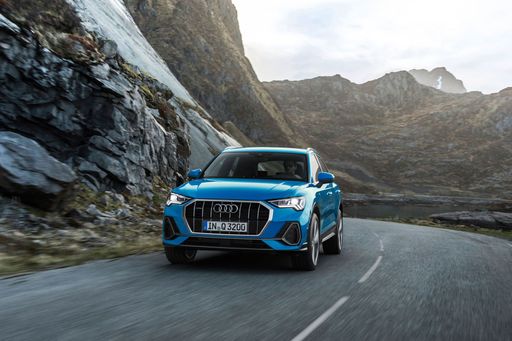 @ Audi AG
@ Audi AG
Audi Q3
Audi Q3
The Audi Q3 feels like a grown-up compact SUV with premium polish and city-friendly agility, the sort of car that makes weekend escapes and daily commutes equally satisfying. Inside, you get quality materials and smart packaging that keep things practical without skimping on style, so it’s an easy pick for buyers who want luxury without the drama.
details @ Audi AG
@ Audi AG
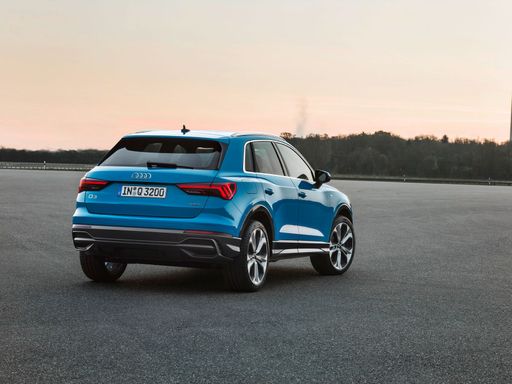 @ Audi AG
@ Audi AG
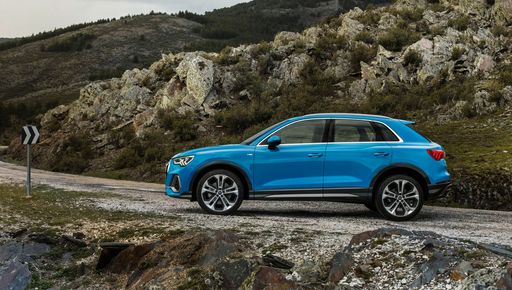 @ Audi AG
@ Audi AG
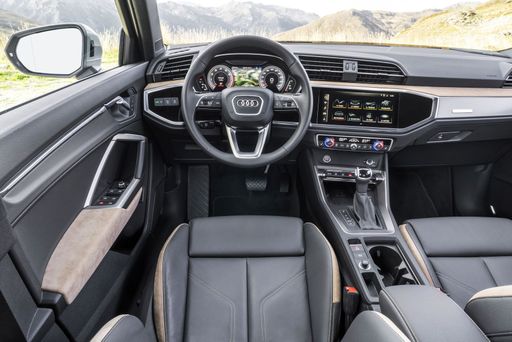 @ Audi AG
@ Audi AG
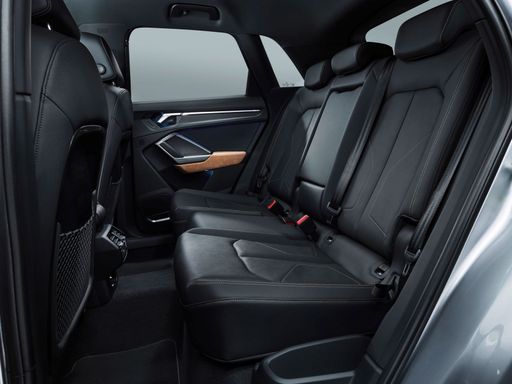 @ Audi AG
@ Audi AG
Mazda CX-5
The Mazda CX-5 blends elegant, athletic styling with a surprisingly engaging driving character, turning routine trips into small, satisfying adventures. Inside it feels thoughtfully built and comfortable, offering sensible practicality and a premium feel that punches above its price.
details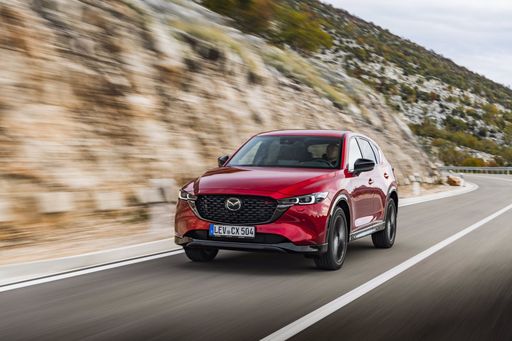 @ Mazda Motor Corporation
@ Mazda Motor Corporation
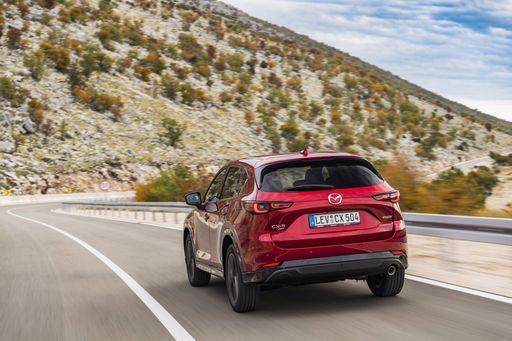 @ Mazda Motor Corporation
@ Mazda Motor Corporation
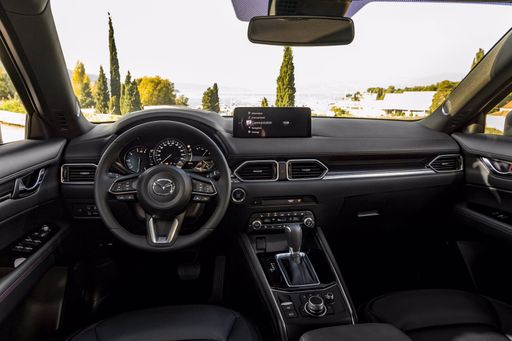 @ Mazda Motor Corporation
@ Mazda Motor Corporation
 @ Audi AG
@ Audi AG
|
 @ Mazda Motor Corporation
@ Mazda Motor Corporation
|
|
|
|
Costs and Consumption |
|
|---|---|
|
Price
38200 - 52900 £
|
Price
30000 - 39500 £
|
|
Consumption L/100km
1.7 - 8.6 L
|
Consumption L/100km
7 - 7.4 L
|
|
Consumption kWh/100km
-
|
Consumption kWh/100km
-
|
|
Electric Range
118 - 119 km
|
Electric Range
-
|
|
Battery Capacity
19.70 kWh
|
Battery Capacity
-
|
|
co2
39 - 195 g/km
|
co2
157 - 168 g/km
|
|
Fuel tank capacity
45 - 60 L
|
Fuel tank capacity
56 - 58 L
|
Dimensions and Body |
|
|---|---|
|
Body Type
SUV
|
Body Type
SUV
|
|
Seats
5
|
Seats
5
|
|
Doors
5
|
Doors
5
|
|
Curb weight
1635 - 1900 kg
|
Curb weight
1629 - 1671 kg
|
|
Trunk capacity
375 - 488 L
|
Trunk capacity
583 L
|
|
Length
4531 mm
|
Length
4690 mm
|
|
Width
1859 mm
|
Width
1860 mm
|
|
Height
1559 - 1601 mm
|
Height
1695 mm
|
|
Max trunk capacity
1196 - 1386 L
|
Max trunk capacity
2019 L
|
|
Payload
505 - 535 kg
|
Payload
-
|
Engine and Performance |
|
|---|---|
|
Engine Type
Petrol MHEV, Petrol, Plugin Hybrid, Diesel
|
Engine Type
Petrol MHEV
|
|
Transmission
Automatic
|
Transmission
Automatic
|
|
Transmission Detail
Dual-Clutch Automatic
|
Transmission Detail
Automatic Gearbox
|
|
Drive Type
Front-Wheel Drive, All-Wheel Drive
|
Drive Type
Front-Wheel Drive, All-Wheel Drive
|
|
Power HP
150 - 272 HP
|
Power HP
141 HP
|
|
Acceleration 0-100km/h
5.7 - 9.2 s
|
Acceleration 0-100km/h
10.5 - 10.9 s
|
|
Max Speed
208 - 240 km/h
|
Max Speed
195 km/h
|
|
Torque
250 - 400 Nm
|
Torque
238 Nm
|
|
Number of Cylinders
4
|
Number of Cylinders
4
|
|
Power kW
110 - 200 kW
|
Power kW
104 kW
|
|
Engine capacity
1498 - 1984 cm3
|
Engine capacity
2488 cm3
|
General |
|
|---|---|
|
Model Year
2025
|
Model Year
2025
|
|
CO2 Efficiency Class
E, G, B
|
CO2 Efficiency Class
F
|
|
Brand
Audi
|
Brand
Mazda
|
Is the Audi Q3 offered with different drivetrains?
The Audi Q3 is available as Front-Wheel Drive or All-Wheel Drive.
The prices and data displayed are estimates based on German list prices and may vary by country. This information is not legally binding.
